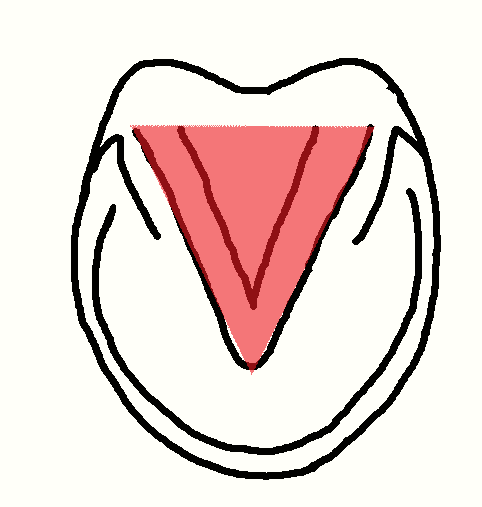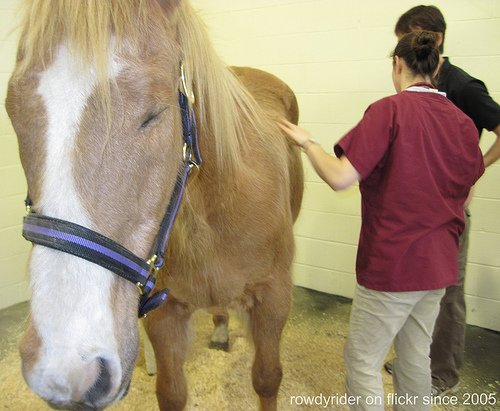

When it comes to long term soundness, the hoof is the most important part of the horse. Therefore, taking care of your horse’s hooves is your first priority. There are many different components that go into maintaining healthy hooves. However, the most important part of your horse’s hoof is the frog. This seemingly innocuous triangle of tissue doesn’t look very important at first glance, but it plays a vital role in your horse’s long-term soundness.
What is the frog and what does it do?

The frog is more than a little triangle of tissue in your horse’s hoof. It’s a shock absorber and shield in addition to playing a vital role in blood flow, traction, and coordination. Taking any one of those functions out of commission seriously impairs your horse. But, if you neglect to take care of your horse’s frogs, you’re taking away all five of those functions at the same time.
Shock absorption
Think of the frog like the shock absorbers in your car. Shock absorbers take the brunt of heavy impacts on rough terrain and limit the strain on the suspension system. In this case, the frogs are the shock absorbers and the suspension system is the tendons and ligaments in your horse’s legs. Without frogs functioning as proper shock absorbers, those tendons and ligaments take a lot more abuse than they normally would. Bones and joints further up the leg are also affected.
Protecting the hoof
A healthy frog protects the vital structures of the hoof from damage caused by excessive impact. This includes the digital cushion, bursa, navicular bone, and deep digital flexor tendon. Many of these structures are delicate enough that they can only take so much damage before it becomes permanent. Without a healthy frog, there is nothing to protect these vital structures within the hoof.
Blood circulation in the hoof

The frog is what keeps blood circulating properly below the knees and hocks. When your horse’s foot hits the ground, the frog dissipates the force of the impact. However, that impact is what pumps the blood back out of the frog and up into the leg. This increased blood circulation is vital to the overall health of your horse’s leg. A horse with poor circulation in his leg will stock up more. Hooves with poor circulation will develop inflammation because of all that blood sitting there with no way for new blood to circulate through with necessary nutrients. Excess inflammation leads to thin soles, underrun heels, and dry, brittle, cracked hooves.
Traction and Coordination
For all that the frog does to protect and support your horse’s hoof, it is full of surprisingly sensitive nerve endings. It is speculated that the frog actually helps your horse feel the ground conditions and judge how best to place his feet. If his frog is not healthy enough to give him proper feedback, he may stumble and misjudge his footing The frog also provides traction on a variety of surfaces. This is demonstrated when barefoot horses–with their frogs in direct contact with the ground–have a better purchase on the snowy or icy ground than many shod horses.
The frog is a versatile and vital part of your horse’s anatomy that needs to be taken care of at all costs. It’s so easily overlooked when assessing a horse’s health, but its importance should never be underestimated.









